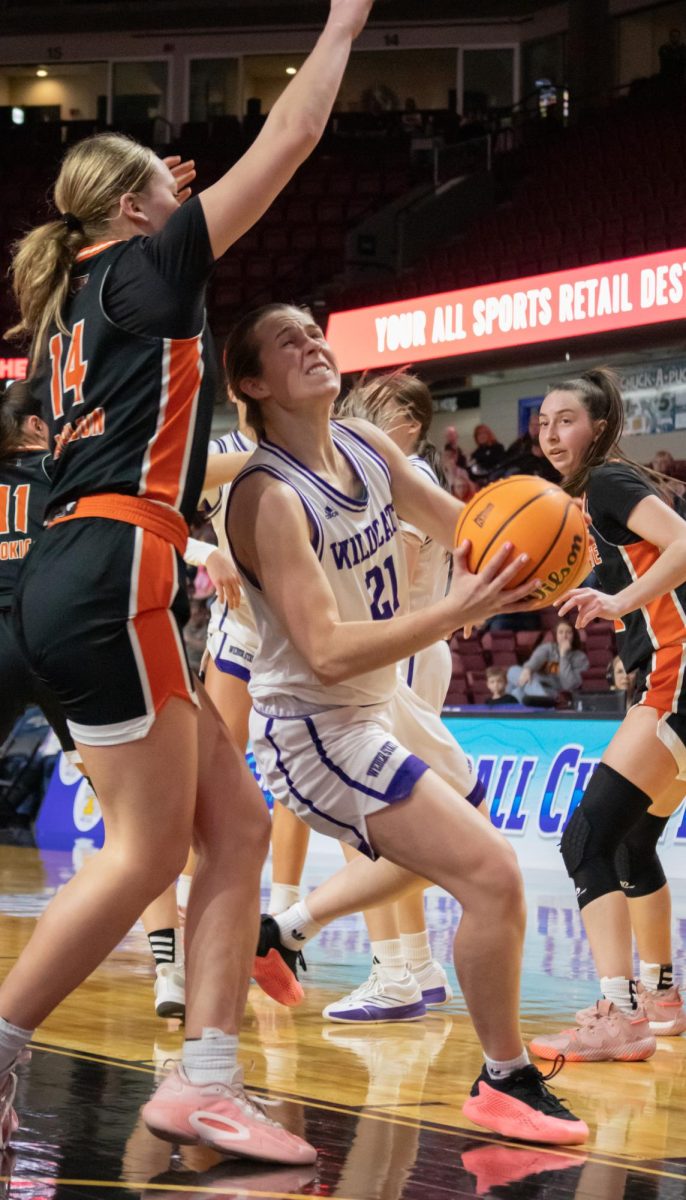
For the first time in 11 years, the NCAA altered the 3-point line for men’s college basketball for the upcoming year.
The 3-point line is moving back nearly a foot and a half, after playing the last 11 years at 20 feet, 9 inches, to the international line of 22 feet, 1 3/4 inches.
“Most of the 3-point shooters across the country are already shooting from there anyways,” head coach Randy Rahe said. “It shouldn’t affect 3-point shooting too much. However, it might affect the bigger guys or adequate 3-point shooters.”
The NCAA is hoping the new line spreads out the defenses, giving offensive players more space.
“It’s going to help spread the game out a bit and create more scoring,” Rahe said. “Offenses will be able to push the ball and kick it back out, creating more guys open and leading to more points.”
Over the past few seasons, Division 1 basketball has seen a decrease in attendance all over the country.
“Division 1 attendance has really gone down over the last few years, and that’s all over the country,” Rahe said. “The NCAA thinks the issue was there is not a lot of scoring, with many games in the 50s and 60s, so if you open up the floor, it gets more exciting.”
During the 2016-17 and 2017-18 season, WSU averaged 41.7 percent from behind the arc, which ranked in the top three nationally. However, they shot 36.4 percent last year.
“Nothing is going to change for us offensively,” Rahe said. “We have been practicing from there for a few weeks because we knew the change was coming. Our guys don’t seem to feel like it’s too big a deal to adjust.”
The NCAA’s rule committee also approved a new shot clock change for both men’s and women’s basketball. When offenses rebound, the shot clock will reset to 20 seconds instead of the full 30 seconds.
“The shot clock rule will help speed up possessions but also increase possession changes,” Rahe said. “I like the change; it’ll make the games faster pace and again, allow more scoring.”
The NCAA is hoping to speed up both the men’s and women’s games pace with the shot clock change and create more possessions for each team per game, ultimately leading to more scoring.
“I don’t like it,” head coach Velaida Harris said. “However, if I’m on defense, I like the rule. Offensively I don’t. If it’s a close game and we used all the shot clock and got an offensive rebound, we don’t get to use 30 more seconds of the game clock.”
The shot clock change will make offenses push the ball quicker on offensive rebounds than it has in the past.
“The change is going to force offenses to move and push the ball quicker,” Harris said. “20 seconds is still a long time and plenty of time to run our offense. This summer we are working the shot clock in and don’t want our girls to get stressed and force plays.”
The women’s committee did not change the 3-point line for the upcoming season, but they plan to examine it according to a news release from the NCAA.
“I like that change,” Harris said. “It’s going to allow more floor spacing and more room for offenses to work.”
For now, as the NCAA examines whether the 3-point line change is a good change, for the women, there is going to be two lines on the court, something all players will need to get used to.
“At first it may be a little difficult for our guys to find and get used to,” Rahe said. “It is something we will practice, and you just have to find the right line. Otherwise it is just a long, two point shot.”













